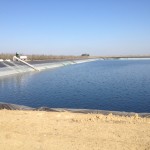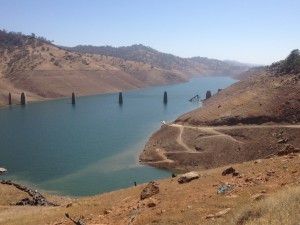Anything that is a plant and green utilizes water. This water use is driven by the process of gas exchange/transpiration which is required for photosynthesis. Environmental conditions (hot and dry will use more than cool and humid), the percent of the ground covered by the plant (higher percent, more water use, but more yield), and the stage of the plant (large leaves use more than little leaves) impact the amount of water required per acre/plant.
Recently, there has been a lot of press about various cropping systems within California. Many are suggesting that farming in California uses too much water to produce food in a “desert.” This simply isn’t true – California produces a lot of food with a higher water use efficiency than in other parts of the world. This efficiency is due to the use of efficient irrigation systems, good water, soil, and nutrient management, and the ability to deliver water in a timely manner (e.g. plants do not wilt prior to irrigation). Continue reading


Recent Comments